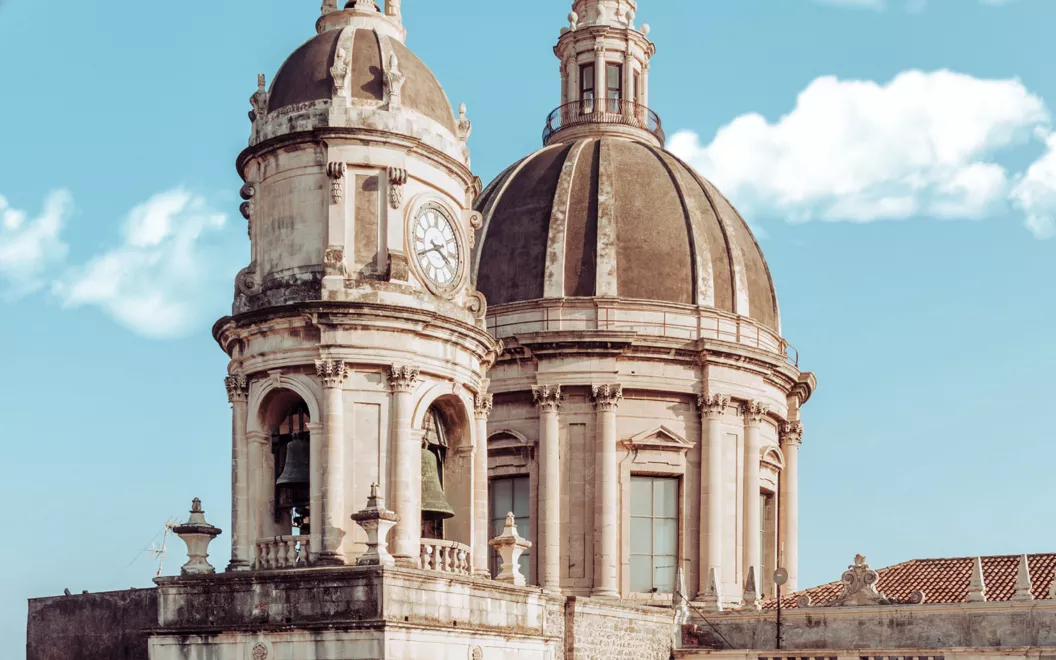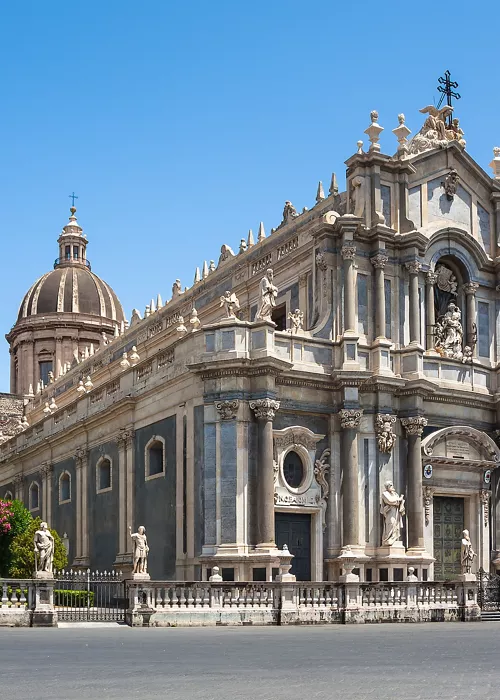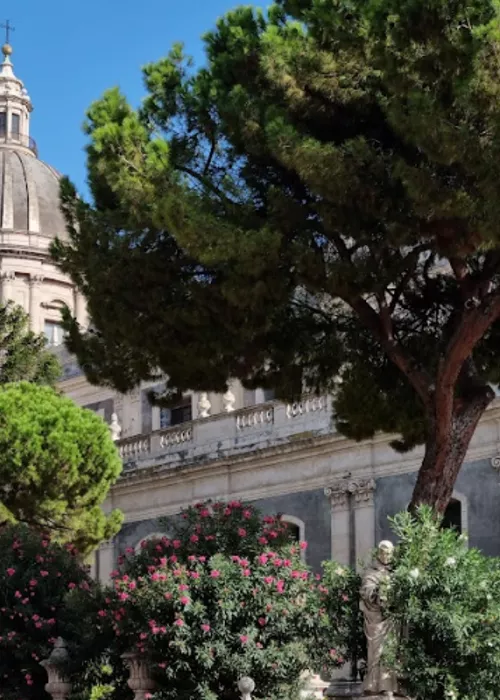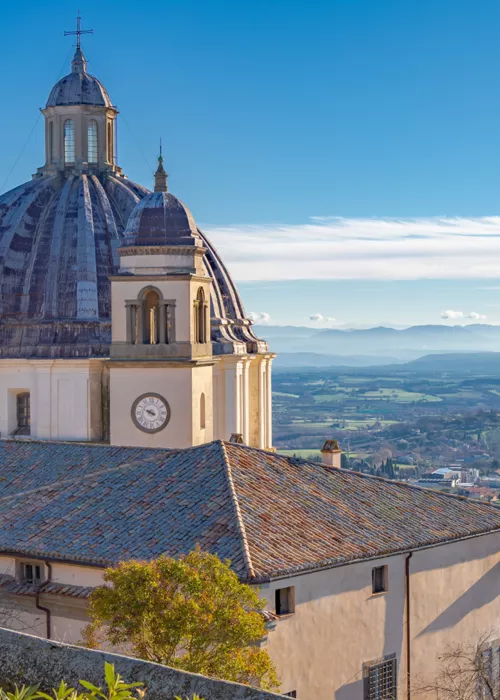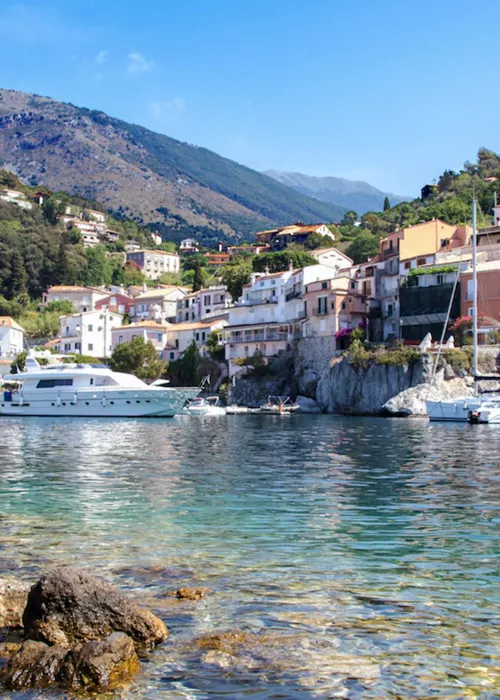The feast of Saint Agatha in Catania, a centuries-old popular tradition
4 minutes
The Feast of Saint Agatha in Catania is a veritable institution in the city. The highlight of the festival is 5 February, with the procession of the patron saint's relics that ends the next morning. The perfect opportunity to spend a few days in the city and experience a truly unique occasion.
Here is everything you need to know about the Feast of Saint Agatha in Catania.
The Patroness of Catania: Sant'Agata and her story
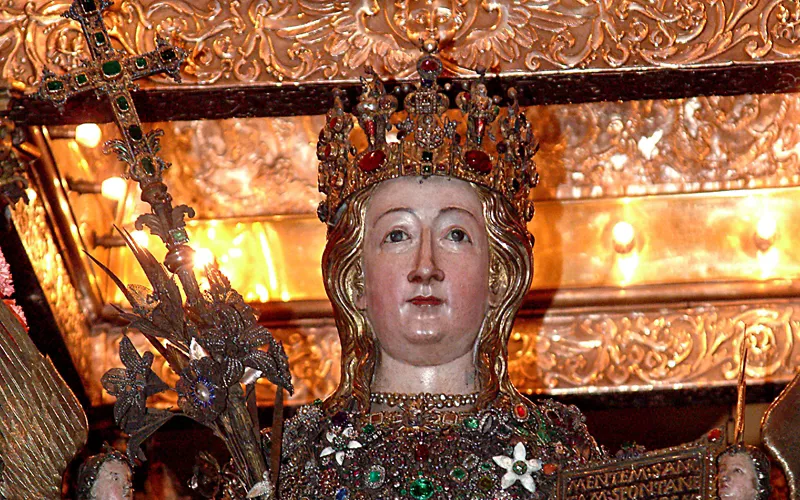
The history of Sant'Agata, which the people of Catania affectionately call Santuzza, began in the third century AD.
At the age of 15, Agata made a vow to God wearing the red veil worn by consecrated virgins.
Growing up, however, the proconsul Quintian fell in love with her and when Agatha rejected him, he publicly accused her of being a Christian and tried her. She was tortured and died on 5 February 251.
The Feast of Saint Agatha in Catania: programme and dates
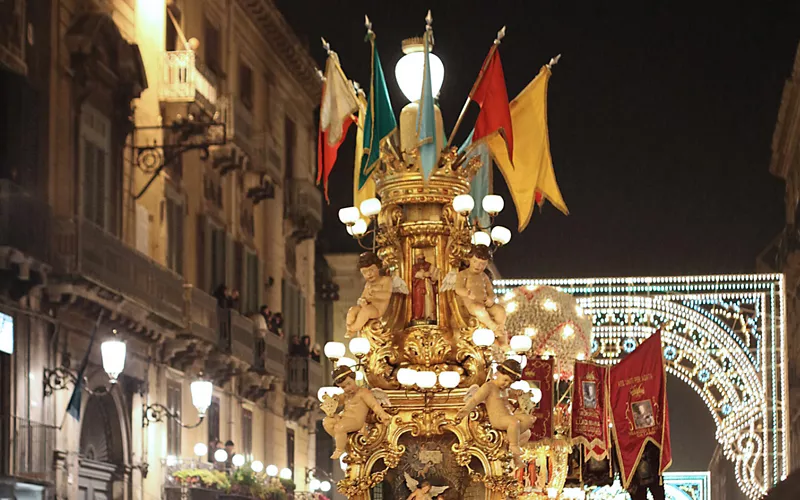
3 February: the offering of wax and candlesticks
The Festival begins on 3 February with the offering of wax and the Candelora procession through the streets of the centre. The ornately tall candles, which represent the ancient guilds of the city, parade in a precise order and move with a gait called 'watered-down', i.e. swinging. The eighteenth-century carriage of the ancient Catania Senate also parades.
4 February: the Mass of the Dawn
From the first light of the morning, the streets of the city and the Cathedral of Sant'Agata are filled with devotees wearing the traditional 'sack', a white tunic with a black cap that recalls the night dress with which the citizens went out into the street when the relics of the saint returned to Catania in 1126.
After the Messa dell'Aurora, a mass at dawn, the relics of the saint are transferred to the silver fercolo, a canopy adorned with red carnations, a symbol of martyrdom, and brought in a procession that makes an anti-clockwise tour of the outside of the city stopping at the places of Sant'Agata in Catania: the ancient cathedral of Sant'Agata la Vetere, the church of Sant'Agata al Carcere and the church of Sant'Agata alla Fornace.
5 February: the procession of Sant'Agata in Catania
The most important day is celebrated with a solemn pontifical and the procession inside the city centre that begins in the late afternoon. The fercolo of Sant'Agata is now adorned with white carnations, a symbol of purity. It is followed by thousands of devotees who carry large lighted candles and praise the saint, along with tourists from all over the world. The procession on 5 February lasts until the early hours of the following day.
Regarding participation, the festival can be compared to Holy Week in Seville.
The stages of the procession not to be missed
Along the way, the Santuzza stops at Piazza Borgo, where a fireworks display lights up the sky. It stops again before embarking on the Ascent of Via Sangiuliano, which is traditionally done by running. On Via Crociferi, it stops in front of the Convent of San Benedetto. The cloistered nuns go out only on this occasion and sing a song in the silence of the early hours of the morning. The procession ends with the return to the cathedral.
17 August: the summer festival of Saint Agatha
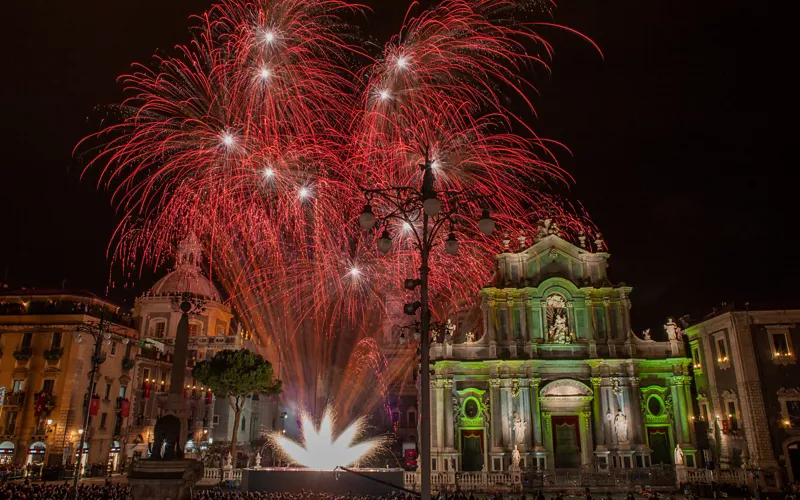
17 August celebrates the return of St Agatha's relics from Constantinople in 1126. The summer festival is less lavish than the February celebrations, but very much heartfelt. It starts in the morning with a procession of the relics in the streets around the Cathedral, and comes to an end in the evening with a solemn mass and a fireworks display.
The typical pastries of Saint Agatha
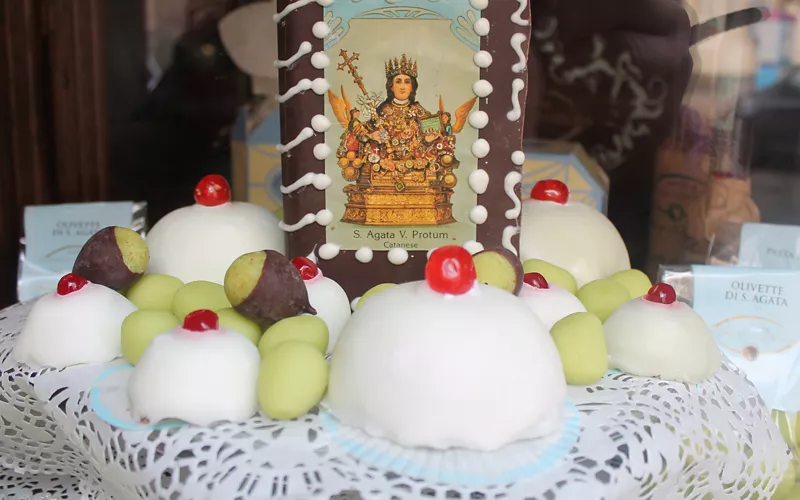
The most famous pastries are the minne di Sant'Agata, small cassatas in the shape of the breasts that were cut off the saint by her torturers.
Also worth tasting are the olivette di Sant'Agata, small morsels of almond paste coloured with green. They recall the legend that an olive tree that appeared out of nowhere hid the saint, and offered her its fruit for nourishment when Agatha, fleeing from Quinziano's soldiers, stopped to tie her shoe. The streets of the city are also lined with stalls selling doughnuts, flavoured handmade sweets and nougat.
How to get to Catania for the Feast of Saint Agatha
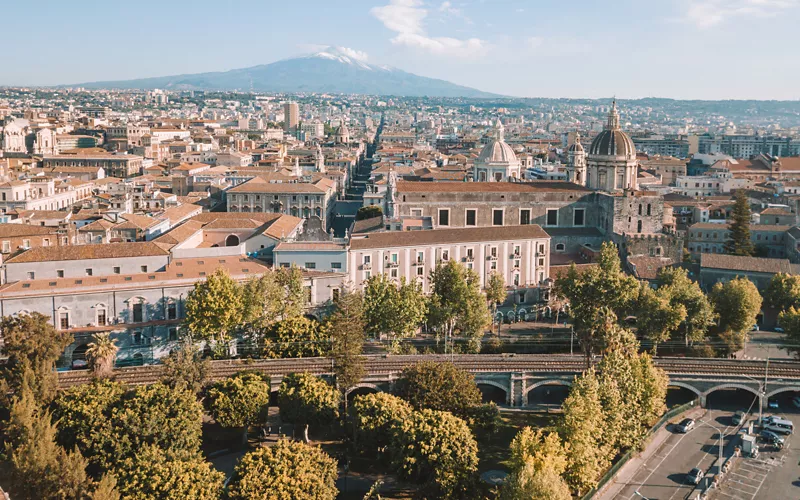
The most convenient way to get to Catania is by flying to Fontanarossa Airport just 5 kilometres from the city centre, connected by bus every 20 minutes and train every 40-60 minutes.
During the days of the festival, the city is packed. Book in advance and look for a hotel with a balcony along Via Etnea to watch the procession from above. If you'd prefer to immerse yourself in the crowd but not miss anything, you can reach the key points of the procession via side streets. You can only get around the area on foot: during the festival days, the centre is closed to traffic and public transport does not operate.

